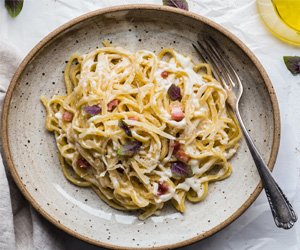


A Culinary Revolution For Busy Lives
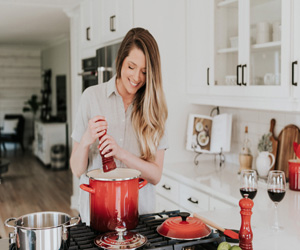
In today's fast-paced world, the demands of work, family, and social commitments often leave us with little time to prepare elaborate meals. Yet, our desire for delicious, home-cooked dishes remains undiminished. Enter one-pot meals, a culinary revolution that has taken the stress out of cooking while delivering flavor-packed, satisfying dishes with minimal fuss.
The Simplicity Of One-Pot Meals
One-pot meals, as the name suggests, involve cooking an entire dish in a single pot or pan. This approach significantly simplifies the cooking process, making it accessible to everyone, from seasoned home cooks to kitchen novices. It's a game-changer for those with busy schedules, as it offers a shortcut to hearty, flavorful meals without the need for an arsenal of pots, pans, and utensils.
Why One-Pot Meals?
Here are a few compelling reasons why one-pot meals have become a staple in many households:
1. Time-Saving: One-pot meals are champions of efficiency. By combining ingredients in one pot, you reduce the time spent on food preparation and cleanup, making these dishes perfect for weeknight dinners.
2. Versatility: From pasta dishes and stir-fries to stews and casseroles, the range of one-pot recipes is astonishing. Whether you're in the mood for something hearty and comforting or light and healthy, there's a one-pot recipe to suit your cravings.
3. Flavorful Creations: One-pot cooking allows ingredients to meld together, resulting in dishes bursting with complex flavors. The mingling of aromas and tastes creates a depth of flavor that can rival even the most intricate gourmet recipes.
4. Minimal Cleanup: Perhaps the most appreciated aspect of one-pot cooking is the ease of cleanup. With only one pot and a few utensils to wash, you can spend less time doing dishes and more time enjoying your meal.
5. Cost-Effective: One-pot meals often feature economical ingredients. By making the most of pantry staples and versatile items, you can create a satisfying meal without breaking the bank.
Getting Started With One-Pot Cooking
Ready to embark on your one-pot cooking journey? Here's how to get started:
1. Choose The Right Cookware: Invest in a good-quality, non-stick pot or pan with a tight-fitting lid. This will ensure your ingredients cook evenly, and you can easily maintain the desired temperature.
2. Plan Your Ingredients: Select a recipe that piques your interest and gather all the necessary ingredients. Many one-pot meals involve simple, readily available components, which makes the planning process a breeze.
3. Follow The Recipe: While one-pot meals are known for their flexibility, it's essential to follow the recipe, at least initially, to get a feel for the timing and ingredient ratios.
4. Experiment And Adapt: Once you're comfortable with one-pot cooking, don't hesitate to experiment. Adjust seasonings, add or substitute ingredients, and make the dish your own.
One-pot meals have become the go-to solution for those seeking a balance between a busy lifestyle and their love for delicious, homemade food. With simplicity, versatility, and a shorter cleanup time, these dishes are a game-changer in modern cooking. So, roll up your sleeves, gather your ingredients, and embark on a culinary adventure that promises delightful flavors and minimal kitchen stress. One-pot cooking is a trend that's here to stay, making mealtime easier, more enjoyable, and full of exciting culinary possibilities.
Crafting The Perfect Cup
 Coffee Brewing Techniques
Coffee Brewing Techniques
Drip Brewing: The classic drip coffee maker is a staple in many households. Ground coffee is placed in a filter, and hot water is dripped over it, allowing the liquid to flow through the grounds, extracting flavors along the way. It's a simple and consistent method.
Pour-Over: Pour-over brewing is a manual and more nuanced approach. Hot water is poured over a bed of coffee grounds in a circular motion, resulting in even extraction. The technique allows for a high level of control over variables like grind size, water temperature, and pouring rate.
French Press: The French press, also known as a press pot or plunger pot, uses a metal or mesh sieve to separate coffee grounds from the liquid. The grounds steep in hot water, and the plunger is used to press them to the bottom, resulting in a full-bodied cup.
Espresso Brewing: Espresso is a concentrated coffee beverage made by forcing hot water under pressure through finely-ground coffee. It requires precision in variables like grind size, water temperature, and pressure to produce a shot with a rich crema and complex flavors.

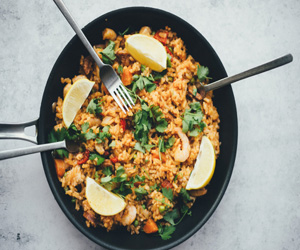
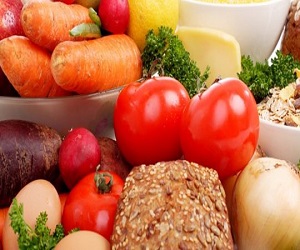
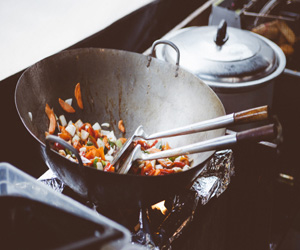
A Recipe For Culinary Serenity
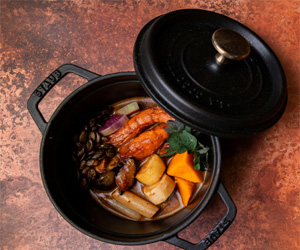 3. Healthy Eating: With the right approach, stress-free cooking can lead to healthier eating. Preparing fresh, nutritious meals doesn't have to be a time-consuming ordeal. Stress-free techniques can help streamline the process.
3. Healthy Eating: With the right approach, stress-free cooking can lead to healthier eating. Preparing fresh, nutritious meals doesn't have to be a time-consuming ordeal. Stress-free techniques can help streamline the process.
4. Enhanced Creativity: Stress-free cooking encourages creativity. When you're relaxed in the kitchen, you're more likely to experiment with new ingredients and flavors, resulting in delightful culinary discoveries.
Tips For Stress-Free Cooking
Here are some practical tips to help you embrace stress-free cooking:
1. Meal Planning: Take a few minutes to plan your meals for the week. This eliminates the daily "What's for dinner?" dilemma and reduces the likelihood of stressful, last-minute grocery store runs.
2. Prepped Ingredients: Save time by prepping ingredients in advance. Chop vegetables, measure out spices, and marinate proteins before you start cooking.
3. One-Pot Wonders: Explore one-pot recipes. These dishes not only simplify cooking but also minimize cleanup, saving you even more time and effort.
A Journey To Culinary Excellence
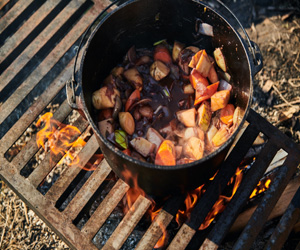 2. Baking: Similar to roasting, baking takes place in an enclosed oven. This method is perfect for bread, pastries, and casseroles, allowing even cooking and browning.
2. Baking: Similar to roasting, baking takes place in an enclosed oven. This method is perfect for bread, pastries, and casseroles, allowing even cooking and browning.
3. Grilling: Grilling imparts a smoky flavor and beautiful grill marks on food. It's a favorite for outdoor cooking, especially for items like burgers, steaks, vegetables, and seafood.
4. Broiling: Broiling places food directly beneath the oven's heating element. It's a quick way to achieve a browned and crispy top layer, making it ideal for cheese-topped dishes and meats.
Moist Heat Cooking Methods
1. Boiling: Boiling involves immersing food in boiling water. This method is suitable for pasta, rice, vegetables, and hardier foods. It's important to note cooking times to avoid overcooking.
2. Steaming: Steaming is a gentle method that cooks food over, not in, boiling water. It preserves nutrients and flavors, making it an excellent choice for vegetables, seafood, and dumplings.
3. Poaching: Poaching involves gently simmering food in a flavorful liquid, typically at a lower temperature than boiling. This method is perfect for cooking delicate items like eggs, fish, and chicken.
A Recipe For Health And Convenience
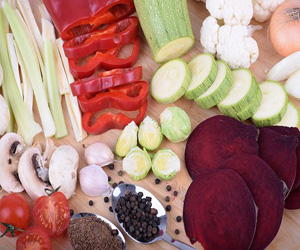 Meal planning is a culinary skill that has grown in importance over the years, offering numerous benefits for individuals and families. It involves preparing a strategy for what to eat, how to shop, and how to prepare your meals in advance. This proactive approach to food management not only makes life easier but also has profound implications for health, nutrition, and overall well-being.
Meal planning is a culinary skill that has grown in importance over the years, offering numerous benefits for individuals and families. It involves preparing a strategy for what to eat, how to shop, and how to prepare your meals in advance. This proactive approach to food management not only makes life easier but also has profound implications for health, nutrition, and overall well-being.
The Basics Of Meal Planning
Meal planning is a systematic approach to deciding what to eat and when. It typically involves:
Menu Creation: You select the dishes and recipes you'd like to prepare for a set period, whether it's for a week, two weeks, or a month.
Ingredient List: Once your menu is set, you compile a list of all the ingredients you'll need for those meals.
Shopping: Armed with your ingredient list, you go shopping for the items you don't have on hand.
Preparation: You then prepare some components of your meals in advance, like chopping vegetables, marinating proteins, or cooking grains, to streamline cooking during the week.
A Culinary Revolution For Health And Sustainability
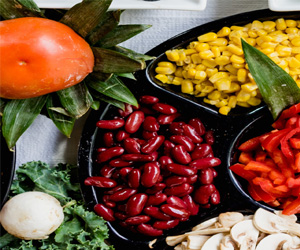 Plant-based cooking respects cultural diversity and inclusivity, making it accessible to people from all walks of life. It seamlessly integrates with a plethora of global culinary traditions, enabling the preparation of familiar dishes and exotic creations. Whether you're a fan of Mediterranean cuisine, Asian flavors, or the richness of Indian spices, plant-based cooking offers a world of gastronomic possibilities.
Plant-based cooking respects cultural diversity and inclusivity, making it accessible to people from all walks of life. It seamlessly integrates with a plethora of global culinary traditions, enabling the preparation of familiar dishes and exotic creations. Whether you're a fan of Mediterranean cuisine, Asian flavors, or the richness of Indian spices, plant-based cooking offers a world of gastronomic possibilities.
Health And Well-being
Plant-based cooking for all focuses on nourishing the body and promoting well-being. These diets are known to reduce the risk of chronic diseases, such as heart disease and diabetes, and can contribute to weight management and overall vitality. Plant-based foods are rich in essential nutrients, vitamins, minerals, and antioxidants that support physical and mental health.
Eco-Friendly And Sustainable
Choosing plant-based options has far-reaching benefits for the environment. Plant-based diets have a significantly lower carbon footprint compared to diets that rely heavily on animal agriculture. By reducing the demand for meat and dairy, we contribute to sustainable farming practices and the conservation of natural resources, all while mitigating climate change.